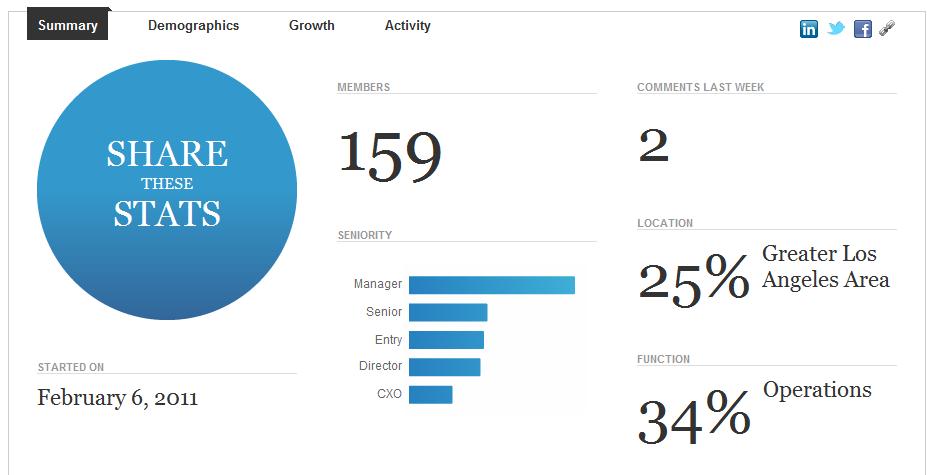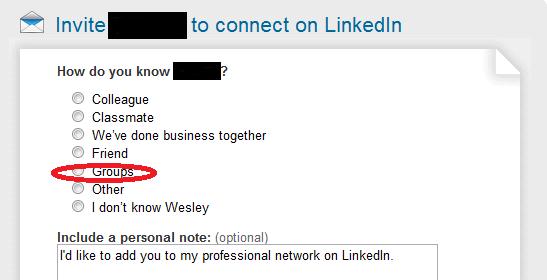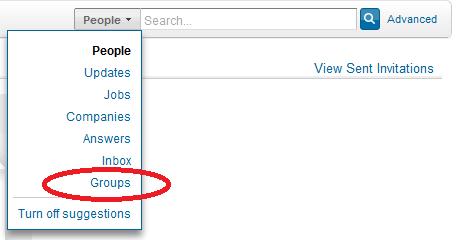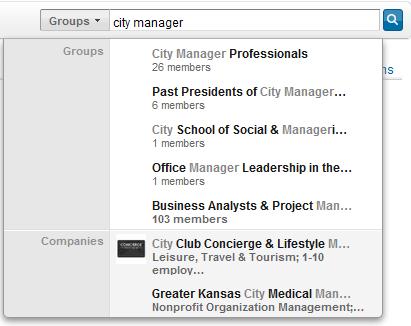Discovering and Using LinkedIn Groups
1. Finding groups
In the top right search bar, navigate to the group search.
As you type in search terms, a drop-down list of matching groups appears.
If you press ENTER instead of selecting from the drop-down menu, you’ll get a more complete listing of groups and advanced search options to narrow down the results.
2. Exploring groups
When you find a group that seems to suit your needs, take a closer look at the existing dynamics. How many members are there? How many recent posts are there—and how many of those posts are relevant and helpful?
Some groups have an overabundance of self-promotion, at the expense of networking and learning. Since there is little benefit to joining a group simply for the sake of having another group listed on your LinkedIn profile, you want to focus on the quality of groups in which you participate as opposed to the quantity of them.


The discussion tab is where much of the group interaction goes on. A busy, well-moderated group will make use of the additional tabs to ensure that all “Discussion” post are, indeed, for discussion. Any promotional posts will go under the “Promotions” tab, while any job postings will be under the “Jobs” tab. If you are joining groups for career networking, definitely explore beyond the “Discussion” tab.
A great way to learn about the group is by navigating to the group statistics, under the “More…” tab.

This gives you a great overview of not only how active the group is, but what demographic has joined.
One additional benefit of joining a group is that it allows you further reach in your networking. LinkedIn has more stringent requirements for adding someone to your network—you must know them, have their e-mail, work at the same job…or be a member of the same group.

3. Group etiquette
In the top group menu options, the “More” tab contains great information—most importantly, the Group Profile. This tells you a little more about the group and, sometimes, will have the group rules laid out.

However, if the group etiquette isn’t defined, there are some rules to follow. First, don’t use the group discussion tab as a promotional outlet. Posting a link to your most recent blog and asking for feedback or discussion about it is great; if you are posting your blog link simply to get it in front of more viewers, place it under the promotions tab.
Don’t join groups simply to invite all the members to join your network. Comment on discussions, connect with relevant users, but be wary of “spamming” members who you don’t know with friend requests.
How have you used groups to improve your LinkedIn experience?





